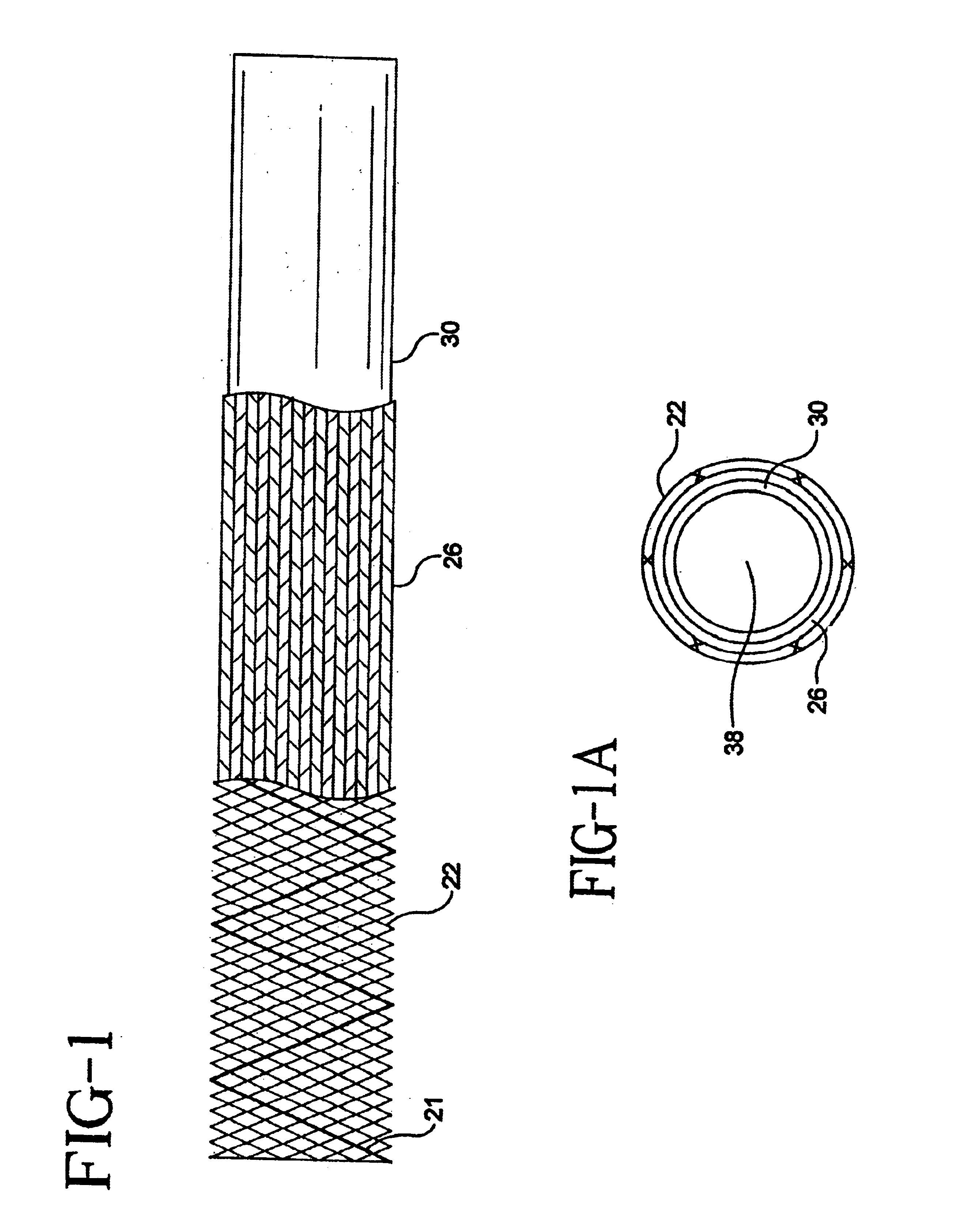Stent-graft-membrane and method of making the same
a technology of stents and membranes, applied in the field of stent graft membranes and making methods, can solve problems such as varicose bleeding
- Summary
- Abstract
- Description
- Claims
- Application Information
AI Technical Summary
Benefits of technology
Problems solved by technology
Method used
Image
Examples
Embodiment Construction
A stent-graft-membrane 20 was made by spraying silicone on a stent-graft. A 10 mm diameter and 50 mm length stent-graft comprising an Elgiloy stent and braided PET graft were bonded together with polycarbonate urethane and placed over a 10 mm diameter mandrel that was first sprayed with a TFE release agent. The mandrel and the stent-graft were placed on a rotational fixture and the motor was turned on to rotate the stent-graft. The stent-graft was coated with a volume of approximately 10 cc of a 6% solid silicone solution. The silicone solution was applied with an airbrush from a distance of approximately 8-10 cm. The solution was applied intermittently over the course of approximately 15 minutes to allow the THF and Xylene solvents to evaporate from the stent-graft surface as it was sprayed in order to prevent the graft from becoming too wet. After the silicone was applied, the mandrel and stent-graft-membrane were placed in an oven at 150.degree. C. for a period of 30 minutes to c...
PUM
| Property | Measurement | Unit |
|---|---|---|
| filament crossing angle | aaaaa | aaaaa |
| filament crossing angle | aaaaa | aaaaa |
| diameters | aaaaa | aaaaa |
Abstract
Description
Claims
Application Information
 Login to View More
Login to View More - R&D
- Intellectual Property
- Life Sciences
- Materials
- Tech Scout
- Unparalleled Data Quality
- Higher Quality Content
- 60% Fewer Hallucinations
Browse by: Latest US Patents, China's latest patents, Technical Efficacy Thesaurus, Application Domain, Technology Topic, Popular Technical Reports.
© 2025 PatSnap. All rights reserved.Legal|Privacy policy|Modern Slavery Act Transparency Statement|Sitemap|About US| Contact US: help@patsnap.com



